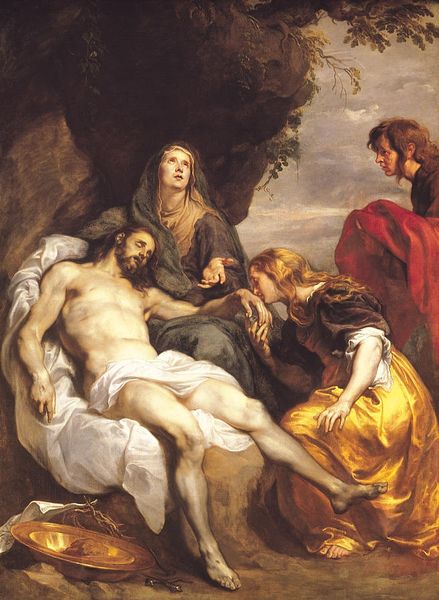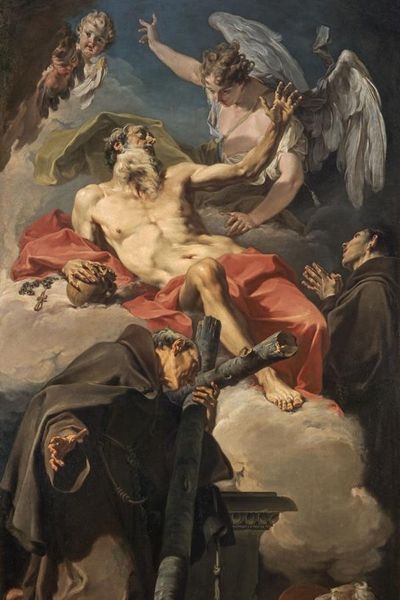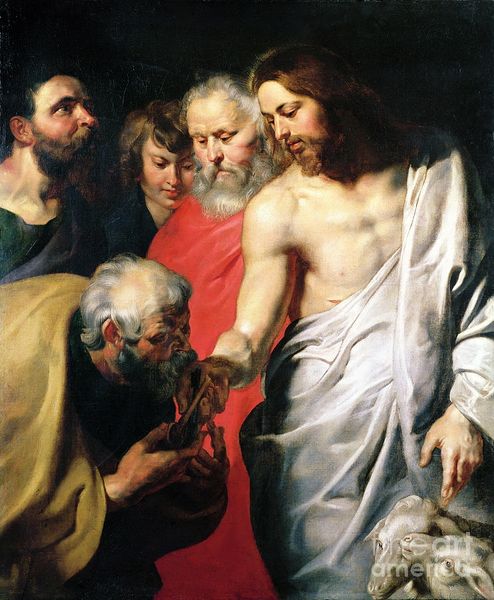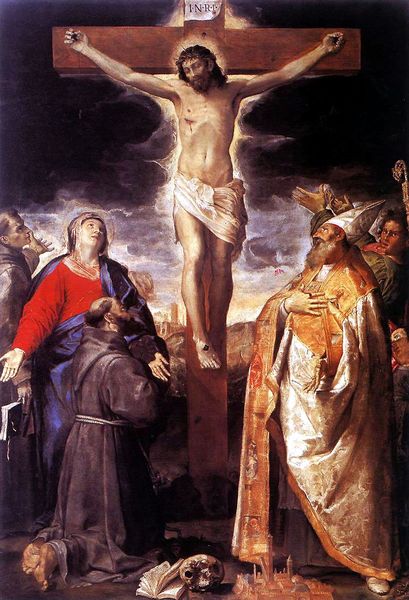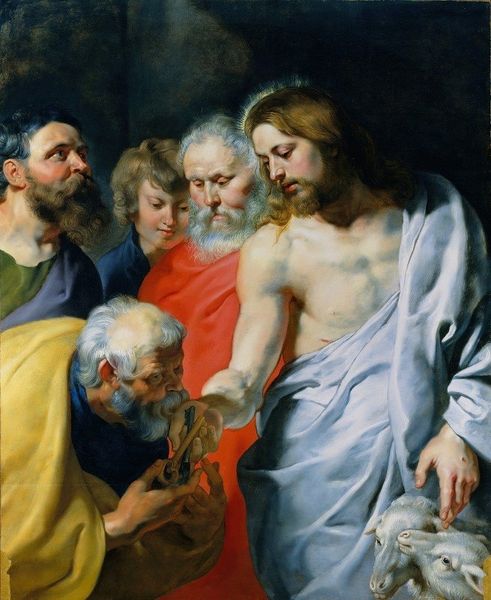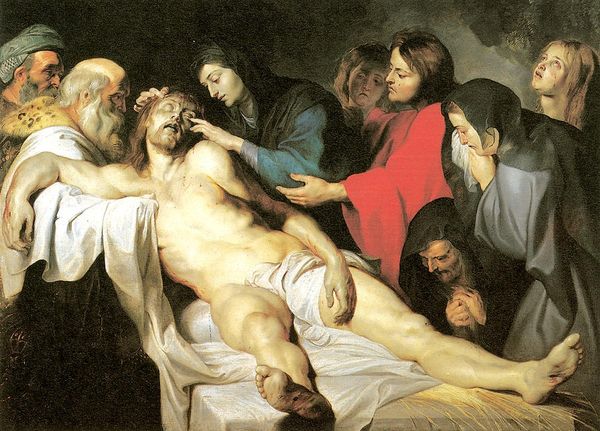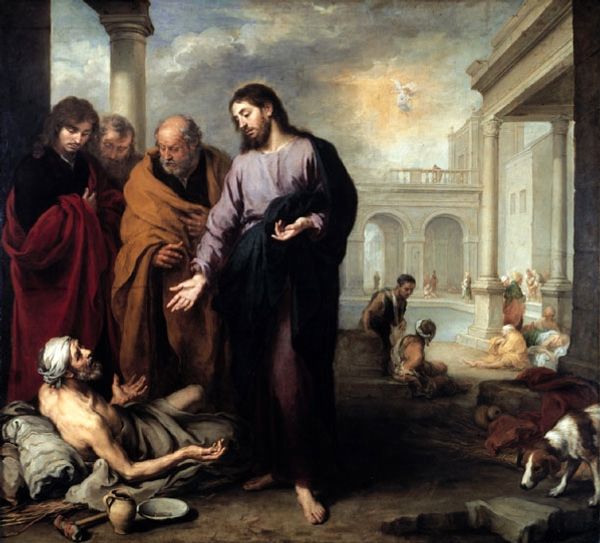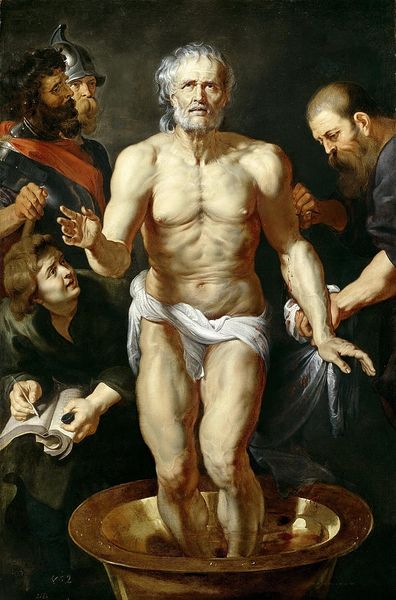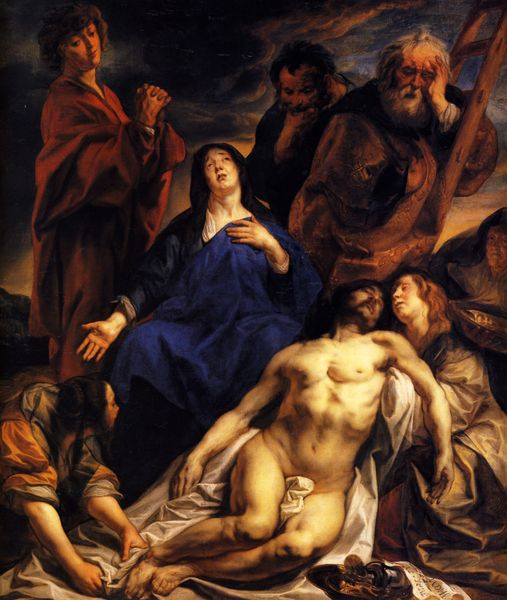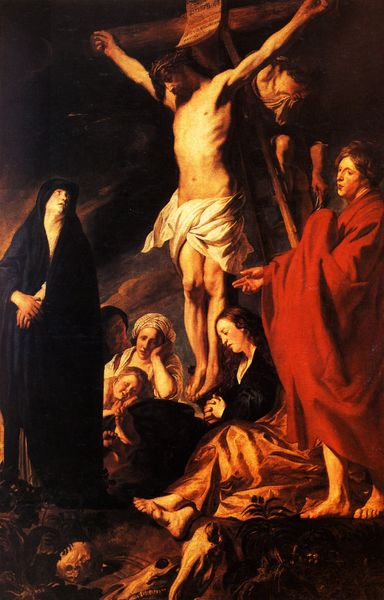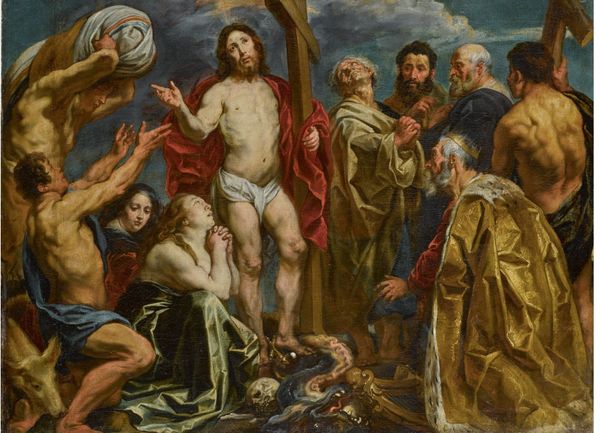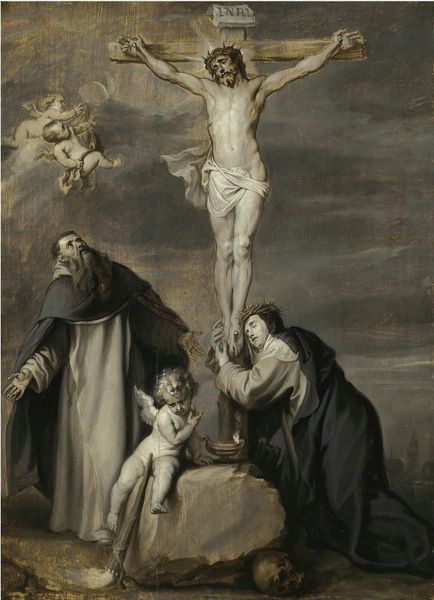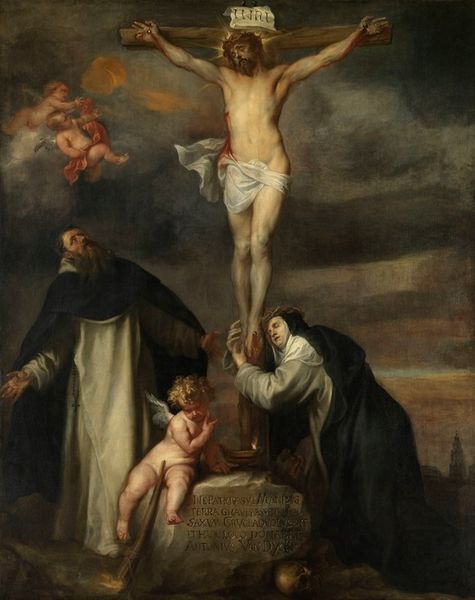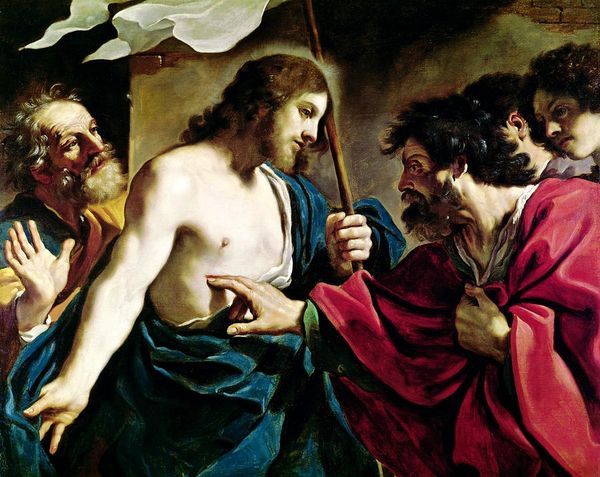
oil-paint
#
allegory
#
baroque
#
oil-paint
#
figuration
#
oil painting
#
history-painting
Copyright: Public domain
Peter Paul Rubens made this oil on canvas of Saint Augustine sometime in the early 17th century. Rubens, typical of Baroque painters, deployed his skills in the service of power, of the Catholic Church, and other wealthy elites. This painting demonstrates the techniques that allowed him to fulfill that role. The process begins with grinding and mixing pigments to create a range of colors and tones. The pigments, sourced from various minerals and organic materials, were carefully combined with oil to achieve the desired consistency and saturation, allowing the artist to create a vibrant and lifelike depiction of his subjects. Rubens layers these colors and tones to create volume, light, and shadow. He's also strategic in his application of paint, allowing us to perceive the textures of skin, fabric, and even the ethereal quality of the divine. This painting is the result of a complex division of labor, from the mining of pigments to the construction of the canvas and the application of paint. Understanding these processes helps us see the painting as the result of social and economic forces, challenging any division between art and craft.
Comments
No comments
Be the first to comment and join the conversation on the ultimate creative platform.
